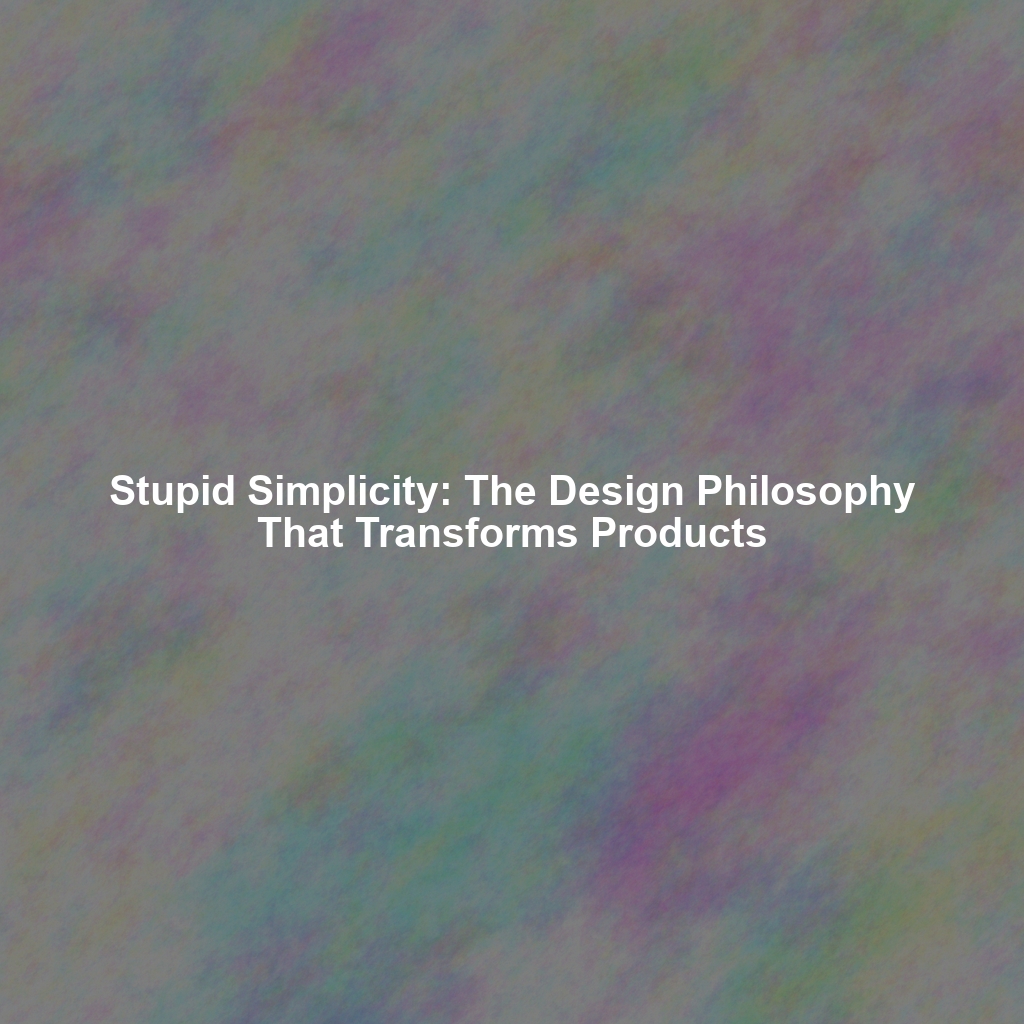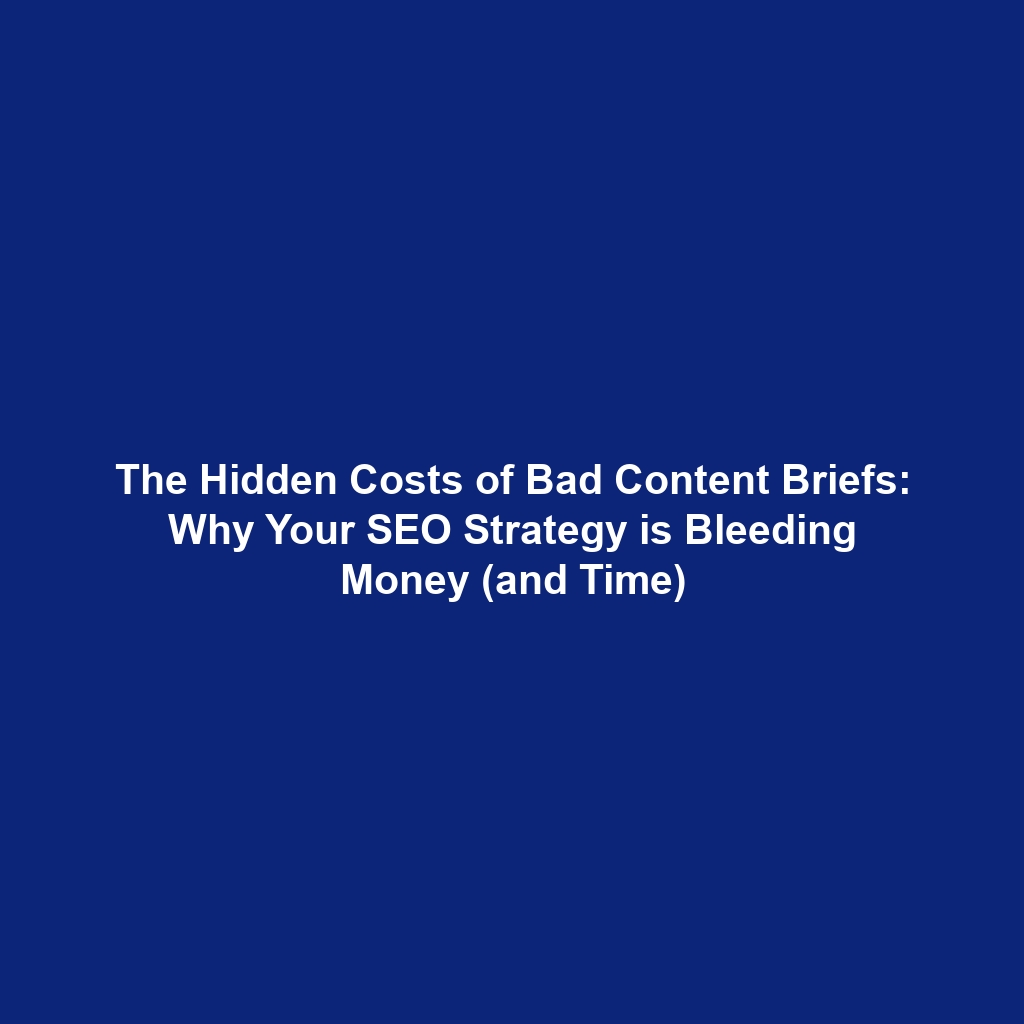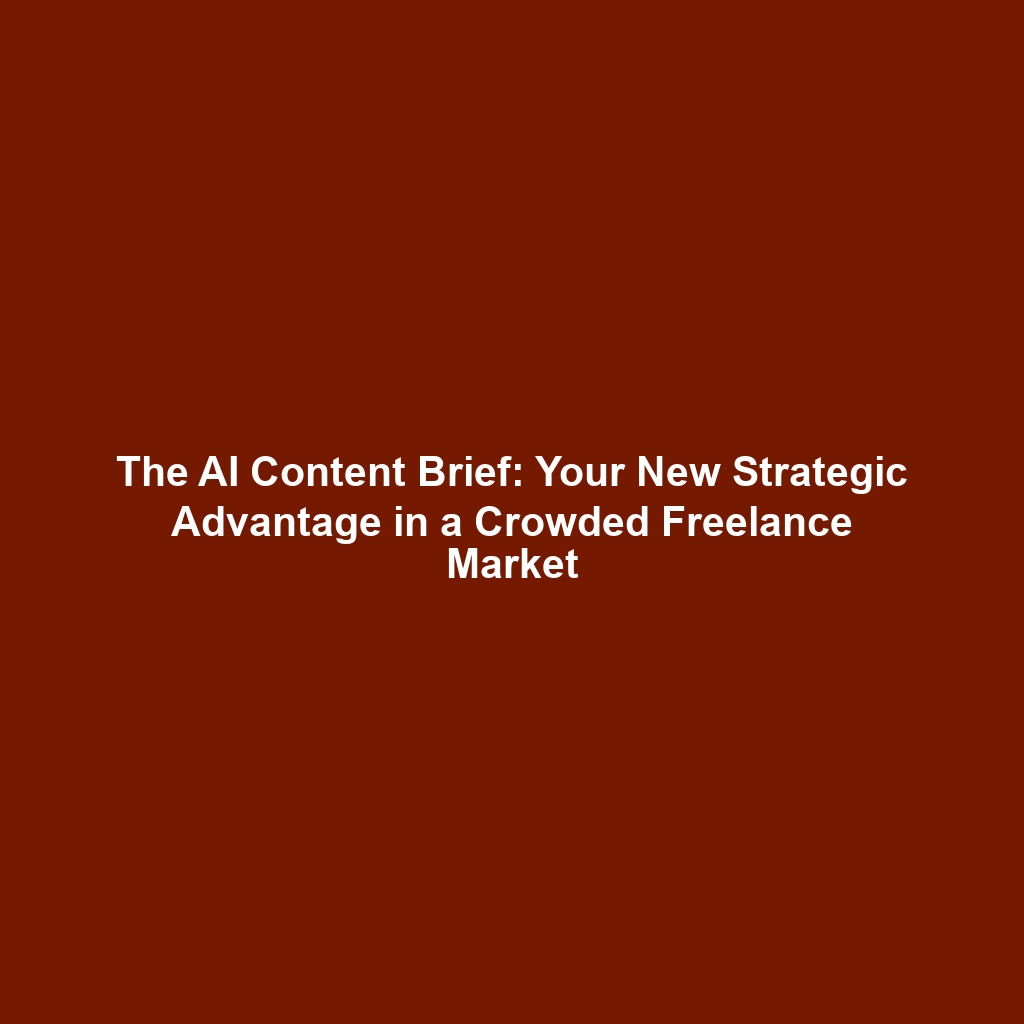💡 The Moment Everything Changed
“If I, as CEO, couldn’t figure out how to use something in our software, our customers definitely couldn’t either.” This simple realization transformed IdeaScale from an industry laggard to a Gartner Customer’s Choice Award winner in just 18 months.
There’s a moment in every product leader’s career when they realize complexity is the enemy of success. For me, that moment came when I became CEO of IdeaScale, a company that had been stuck outside the top 10 in our product category for nearly a decade.
The solution wasn’t more features, better marketing, or a bigger sales team. It was something far more fundamental: embracing what I call “stupid simplicity.”
🎯 What Is Stupid Simplicity?
Stupid simplicity is the aggressive minimization of user cognitive load. It’s the relentless pursuit of making your product so intuitive that anyone can immediately understand what it does and what they need to do next. The term might sound harsh, but it’s intentionally provocative—it forces you to design for the lowest common denominator of user understanding.
Important: This isn’t about dumbing down your product or assuming your users lack intelligence. It’s about recognizing that cognitive energy is finite and precious.
Every moment a user spends figuring out your interface, decoding your terminology, or navigating confusing workflows is energy they can’t spend on what actually matters: achieving their goals. Think of it like President Obama’s approach to decision-making—he had a pre-selected suit for each day of the week so he wouldn’t waste mental energy on clothing choices, preserving his cognitive resources for real presidential decisions.
📈 The IdeaScale Transformation: A Case Study in Radical Simplification
When I took over as CEO of IdeaScale, I applied one simple rule that became our north star: if I couldn’t figure out how to use something in our software, our customers definitely couldn’t either. This became my litmus test for every feature, every workflow, every piece of interface text.
🚀 The Three-Pillar Simplification Strategy
🧹 Decluttering the Interface
We removed every element that didn’t directly contribute to core user tasks. Buttons, menus, and options that existed “just in case” were eliminated without mercy.
🐛 Bug Elimination
Nothing destroys user confidence like encountering broken functionality. We made bug fixes a top priority, understanding that even small glitches create massive cognitive friction.
⚡ Workflow Simplification
Complex multi-step processes were streamlined or completely redesigned. If a workflow required more than three steps, we questioned whether it was truly necessary.
But the real magic happened when we tackled our language problem. Our software was filled with IdeaScale-specific terminology that forced users to learn an entirely new vocabulary just to use our product. We systematically replaced our custom terms with industry-standard language that users already understood.
Every tooltip, every help text, every label was rewritten in plain English with fewer words. The goal wasn’t just clarity—it was cognitive efficiency.
🏆 The Results Were Dramatic
18 months: From outside top 10 to Gartner Customer’s Choice Award winner
The transformation wasn’t magic—it was simply the power of removing friction from the user experience.
🌍 Beyond Software: The Universal Application of Stupid Simplicity
Stupid simplicity extends far beyond software design. It’s a philosophy that applies to communication, business processes, and any interaction where human understanding is crucial. I’ve applied this principle across multiple roles and industries with consistently powerful results.
💼 Simplifying Business Operations
As CFO of Fusion Transport, I helped simplify internal KPI metrics so that it was easy for employees—whether senior or junior, white collar or blue collar—to know whether they were doing well without having to think hard. We replaced complex financial ratios with simple color-coded dashboards and clear performance indicators that anyone could understand at a glance.
💡 Pro Tip: The 5-Second Rule
If someone can’t understand what they need to do within 5 seconds of looking at your interface, dashboard, or communication, it’s too complex. Period.
📧 Communication That Cuts Through the Noise
In writing emails—whether for sales or M&A—I avoid fluffy language and am relentlessly upfront. I don’t do bait-and-switch emails because I hate getting sales emails from some AE who says they want to “learn about my business and form a partnership.” No, they want to sell something to me, and that’s perfectly fine, but they’ve wasted my time because I had to figure out that they’re a salesperson, decode what product they’re selling, and understand its value proposition.
Instead, I advise my salespeople to be direct: “I want to sell you Product X for Y price, and here’s the specific value it will create for you.” This approach reduces the recipient’s cognitive load and is more ethical too. Executives appreciate directness because it respects their time and mental energy.
⚡ The Science Behind Cognitive Load
The principle of stupid simplicity is rooted in cognitive psychology. Our brains have limited processing capacity, and when we overload users with choices, information, or complex interactions, we trigger what psychologists call “cognitive overload.” This leads to decision paralysis, user frustration, and ultimately, product abandonment.
🧠 The Cognitive Load Theory
Intrinsic Load: The mental effort required to understand the core task
Extraneous Load: The mental effort wasted on poor design and unnecessary complexity
Germane Load: The mental effort used to process and understand information
The Goal: Minimize extraneous load so users can focus on what matters.
🎯 Implementing Stupid Simplicity: Your Action Plan
Embracing stupid simplicity isn’t just about removing features—it’s about making strategic choices that prioritize user understanding over designer ego or feature completeness. Here’s how to start:
Question Everything: For every element in your product, ask “Does this reduce or increase cognitive load?” If it increases load without providing essential value, eliminate it.
Use the CEO Test: If the most senior person in your company can’t figure out how to use a feature quickly, neither can your customers.
Embrace Industry Standards: Don’t reinvent terminology or interaction patterns unless you have a compelling reason. Users come to your product with existing mental models—work with them, not against them.
Measure Time to Value: How quickly can a new user achieve their first meaningful outcome? This should be measured in minutes, not hours or days.
🚀 The Competitive Advantage of Simplicity
In our attention-scarce economy, the products and services that win are those that respect users’ mental resources. Stupid simplicity isn’t just good design—it’s good business. It reduces support costs, increases user adoption, improves satisfaction scores, and ultimately drives growth.
The companies that understand this principle are already winning. They’re building products that feel effortless, communications that cut through noise, and processes that just make sense. They’re not winning because they’re smarter than their competitors—they’re winning because they’re making everything simpler for their users.
🎯 The Bottom Line
The next time you’re designing a product, writing an email, or creating any user experience, ask yourself: “Am I adding to someone’s cognitive load, or am I reducing it?” The answer to that question might just determine your success.


